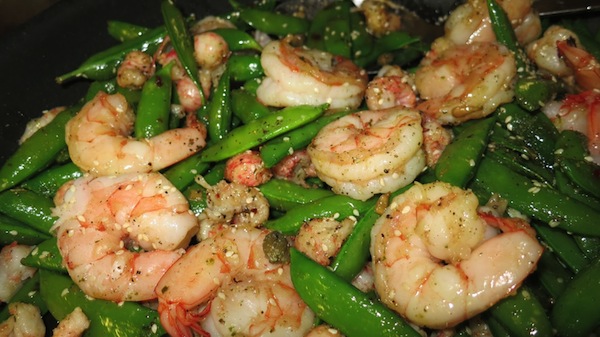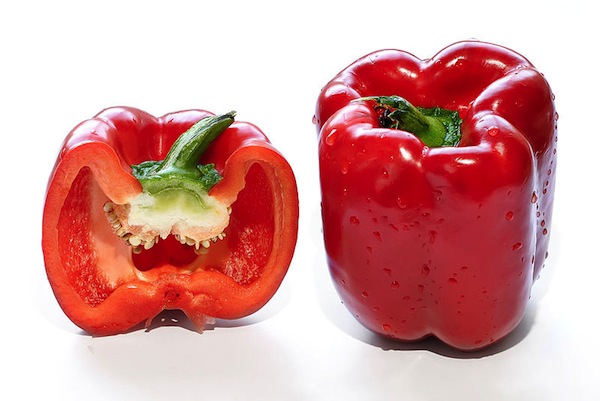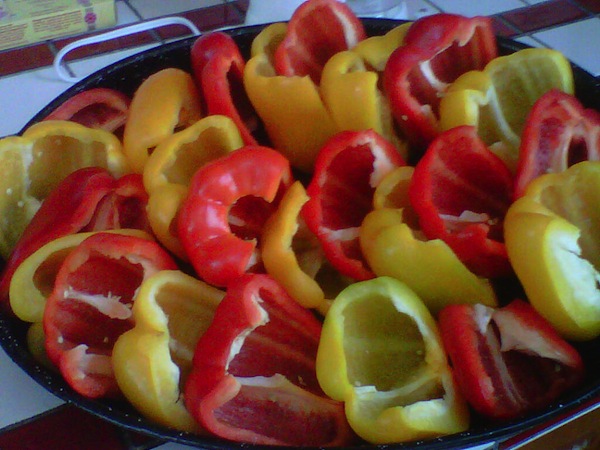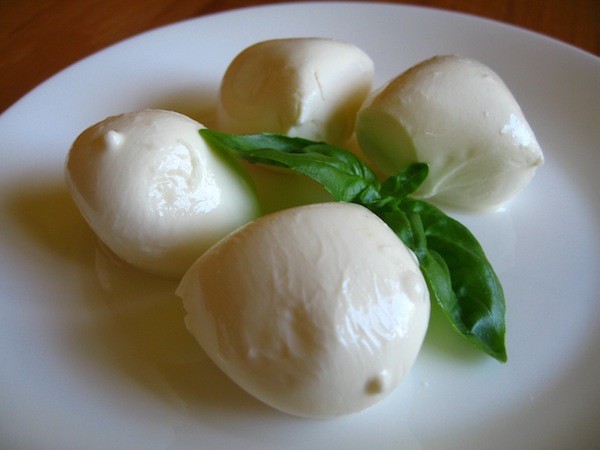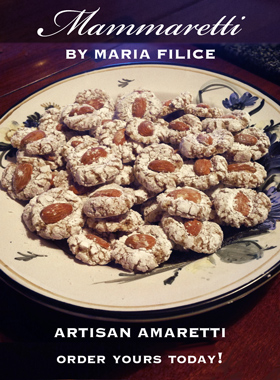By Maria Filice • April 16, 2013
One of my favorite vegetables is eggplant (available all year). So simple to prepare and a delicious side or meal.
I like to grill eggplant with a drizzle of olive oil and fresh mint. In this recipe, I cubed one eggplant (leaving the skin) and grilled in the oven (10-15 minutes), until tender.
In a bowl, add some chopped fresh basil, pitted kalamata olives (1/2 cup), 1/2 cup of julienne sun dried tomatoes. Add a pinch of red chili flakes (optional), drizzle extra virgin olive oil (or 3 tbsp.). Squeeze a fresh lemon and rind 1tbsp. of lemon.
Mix and ready to serve! A perfect side for your favorite grilled fish, chicken or meat. Adding goat cheese for a vegetarian meal is also delicious!
a presto,
maria
By Maria Filice • April 10, 2013 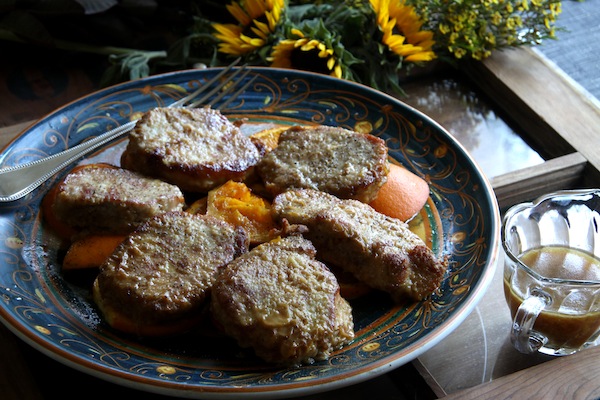
Cookstr.com featured my Orange Glazed Pork as recipe of the day and Chef of the Day! Wanted to share it with you. I also altered the recipe with chicken, beef and fish. The citrus taste of orange is a fresh flavor that you can use in your favorite dishes! This recipe is in my cookbook, Breaking Bread in L’Aquila.
Maiale all’Arancia
Depending on the appetite of your crowd and what else you will be serving, you may want to double this recipe as it really allows for one chop per person. This orange-scented pork is perfect served with an arugula salad.
Yield : Serves 6
Ingredients
- 2 cups freshly squeezed orange juice
- 6 center-cut pork chops, about 1 inch thick, trimmed of excess fat
- 2 tablespoons extra virgin olive oil
- ½ cup dry white wine
- 2 oranges, cut into ¼-inch-thick slices
- 2 cloves garlic, minced
- Coarse salt and fresh ground black pepper, to taste
- 1 tablespoon orange zest for garnish
Directions
Orange glaze: cook orange juice in a saucepan over a medium heat for about 10 minutes until it is reduced by half and there is about a cup of glaze. Set aside.
Sprinkle the chops with salt and pepper. Heat 2 tablespoons of oil in a large skillet over medium-high heat for 2 or 3 minutes. Add the chops (you’ll probably have to cook them in batches, and it is important not to overcrowd the pan) and turn the heat to high. Cook the chops for 3 to 4 minutes on each side until they are brown.
Reduce the heat to medium. Add the wine and garlic and cook until the wine is almost evaporated, about 3 minutes. Add the orange glaze and sliced oranges, and reduce the heat to low. Cover and simmer for 10 to 15 minutes, turning once or twice until the chops are tender but not dry.
Remove the chops to a serving platter. Continue cooking the pan juices, stirring and scraping the bottom of the pan, until the liquid is reduced slightly. If you need to add more liquid, add a bit more orange juice combined with water or chicken stock. Pour over the chops, top with the orange zest, and serve.
By Maria Filice • April 9, 2013 
Pasta alla Chitarra with mushrooms is one of my favorite pasta dishes. This is Abruzzo’s signature pasta – made with a pasta guitar (it looks like a harp) to produce squrish-shaped spaghetti.
The sauce is very simple – cooks in about 10 minutes including preparation. When sauces take minutes, I prepare it when the pasta is cooking.
One of my best friends in Rome, Elena gifted me a bag of dried porcini mushrooms. I use them for special occasions and stored in my pantry where they are out of reach!
To restore the porcini back to life – add a cup of porcini to approx. two cups of hot water. Set aside for twenty minutes, draining and rinsing well. Save the flavorful liquid by adding to a next day risotto or a tender roast beef. My grandmother haunts me when I throw out anything – it’s part of my roots!
In a large skillet, heat on medium-low, a drizzle of olive oil and butter (approx. 1 tbsp) and add two crushed cloves of garlic for a minute or until the garlic turns golden. Add the porcini and saute for approx. five minutes. Add one cup of the porcini liquid and a tsp. of tomato paste. Remove the garlic and stir the sauce as the tomato paste dissolves.
Add the cooked pasta to the skillet and a handful of freshly grated Parmigiano-Reggiano (1 cup) to the skillet. Mix the pasta in the sauce before serving. Sprinkle finely chopped parsley (optional).
a presto,
Maria
By Maria Filice • March 30, 2013
On Good Friday, instead of my classic pasta with shrimp, I seared the shrimp with sugar snap peas. On Thursday, I bought two lbs. of plump sugar snap peas and one lb. of frozen (cleaned) uncooked shrimp.
Sugar Snap Peas: eat pod and all – raw or cooked (great source of Vitamin C). When you cook them, make sure you only cook for 1 to two minutes to keep it’s vibrant green color, crispy and sweet texture.
Place them in a colander and rinse in cold water. Pat them dry with paper towels before you cook.
I like to stir fry with shrimp in my wok. If you don’t have a wok, use a frying pan too. Important to pat dry the snap peas with paper towels. Why? Whenever you have hot oil in a pan and a drop of water hits the oil, hot oil splatters everywhere – be careful!
Begin with adding a drizzle of olive oil in the pan (medium-high). Add the fresh or thawed clean (de-veined, shell removed) to the pan. Sautee until the shrimp they turn pink (1-2 minutes). Add the plump sugar snap peas and cook for another 2 minutes. Salt and black pepper to taste.
I like to add toasted sesame seeds, fresh basil and a drizzle of my favorite finishing oil from www.oilemporium.com
A few red chili flakes and ready to serve and seconds to devour!
a presto,
Maria
By Maria Filice • March 25, 2013 The Spring colors are vibrant and bright. Today, I wanted to feature red and yellow peppers. Did you know that peppers turn green FIRST and then yellow and red. This is why red and yellow have a fruity and sweet taste. Green bell peppers have a slight bitter flavor and one of the reasons why some of us cannot digest green peppers! Peppers also have Vitamin A, Vitamin C and beta carotene.
I remember growing up when my grandmother would pick them fresh from the garden (talk about organic). Nanna would either roast them in the over or use the outside barbeque.
I’m serving my roasted peppers today as an appetizer. After roasting, I’m stuffing the halved roasted peppers with fresh bocconcini (bite size fresh mozzarella) with a drizzle of extra virgin oil. The classic way to serve bocconcini is the classic tomato and fresh basil. Today, roasted peppers with a garnish of basil. Try it – you will definitely like it!
Cut the peppers in half and remove the core. Place the peppers in a non stick pan or cookie sheet. Drizzle a little olive oil and salt. Pre-heat oven at 350F for :30 minutes. Turn the peppers every :15 to make sure that are cooked.
a presto,
Maria
|
|



